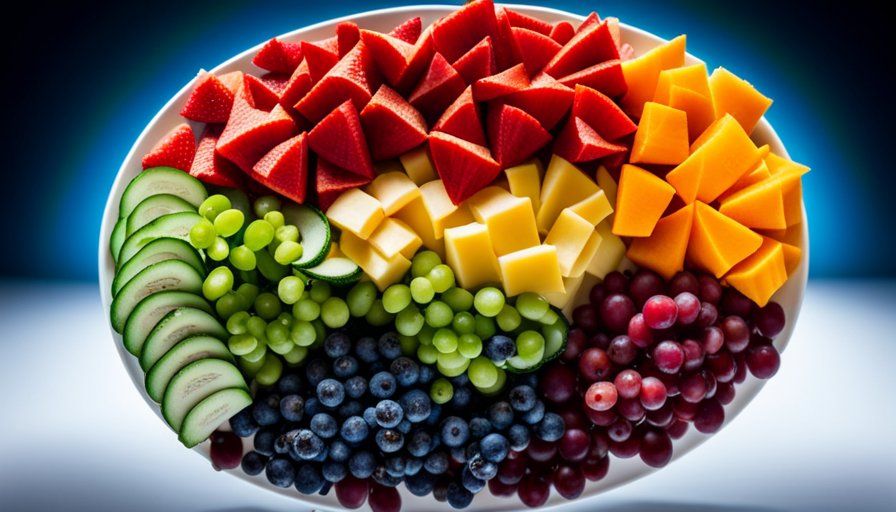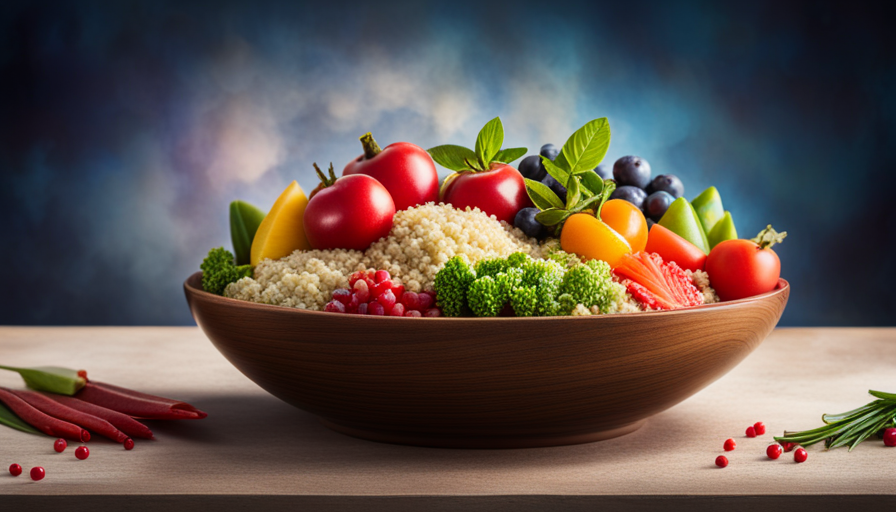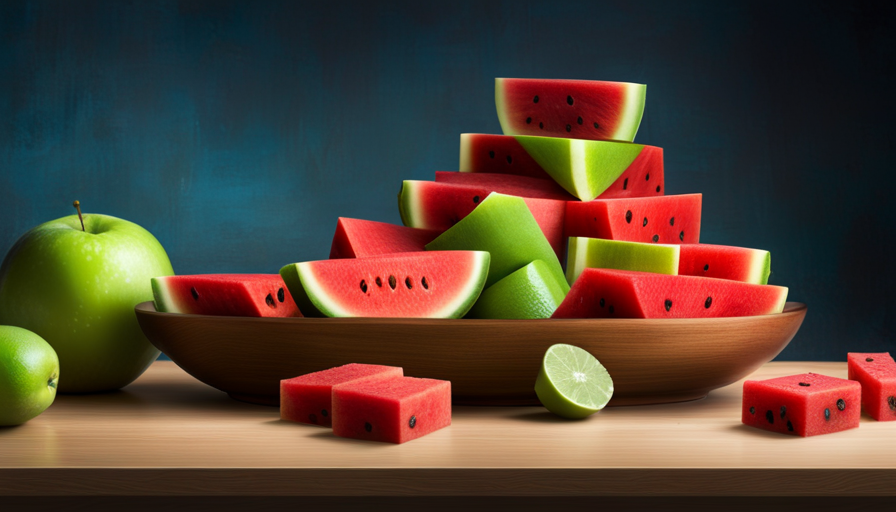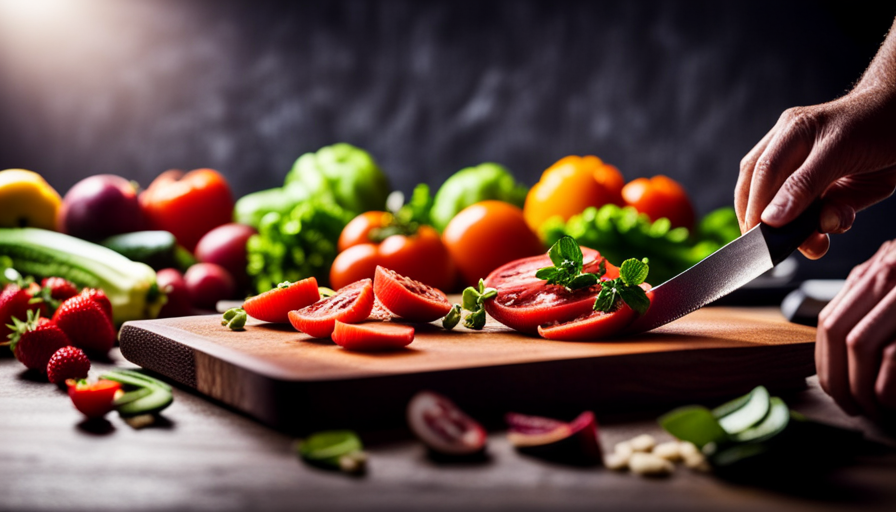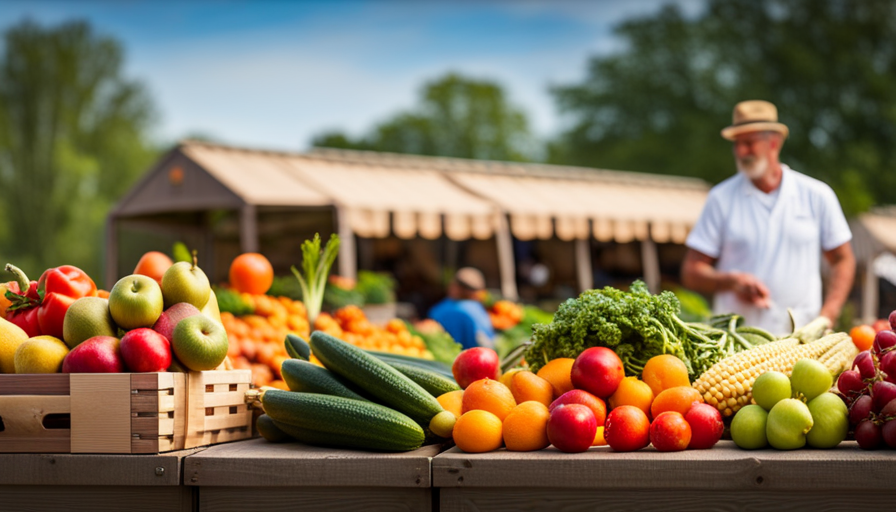Are you ready to improve your health and increase your energy levels? Then prepare to embark on an exciting journey with the raw food diet!
By consuming unprocessed, whole foods in their natural state, you can unleash the full potential of their nutrient content. But how do you actually do the raw food diet? Get ready to uncover the secrets of this transformative lifestyle as we guide you through the principles, benefits, and challenges of going raw.
From incorporating an abundance of raw fruits and vegetables into your meals to exploring the power of raw nuts, seeds, grains, and legumes, we’ll show you how to create delicious, satisfying meals that nourish your body from the inside out.
Plus, we’ll provide tips for transitioning to a raw food lifestyle successfully. Get ready to discover the incredible benefits of the raw food diet and start your journey towards optimal health and vitality today!
Key Takeaways
- Incorporate a variety of raw fruits and vegetables to add essential nutrients and fiber to the diet.
- Include raw nuts and seeds, such as almonds and chia seeds, for heart-healthy fats, protein, and fiber.
- Soak raw grains and legumes overnight to improve digestibility and nutrient absorption.
- Enjoy raw soups, salads, juices, and desserts made with natural ingredients to retain nutritional value and promote overall well-being.
Understanding the Principles of the Raw Food Diet
To truly grasp the essence of the raw food diet, you must familiarize yourself with its underlying principles. The principles of the raw food diet revolve around the idea that food in its natural, uncooked state is the most beneficial for our bodies.
By consuming raw fruits, vegetables, nuts, seeds, and sprouts, you’re providing your body with essential nutrients and enzymes that are often lost during cooking.
One of the main benefits of the raw food diet is the increased intake of vitamins and minerals. Raw fruits and vegetables are packed with vitamins like vitamin C and minerals like potassium, which play crucial roles in maintaining a healthy body.
Another benefit is the abundance of enzymes present in raw foods. Enzymes are essential for digestion and nutrient absorption, and by consuming raw foods, you’re ensuring that your body has an ample supply of these enzymes.
Additionally, the raw food diet is known to promote weight loss. Raw foods are often lower in calories and higher in fiber, which can help you feel fuller for longer and reduce cravings. This can lead to natural and sustainable weight loss over time.
Understanding the principles of the raw food diet is essential to fully embrace its benefits. By consuming raw, uncooked foods, you’re providing your body with essential nutrients, enzymes, and promoting weight loss.
Incorporating Raw Fruits and Vegetables into Your Meals
Start by adding a burst of vibrant colors to your plate with a variety of crisp, juicy fruits and vegetables that’ll make your taste buds dance with joy. Incorporating raw fruits and vegetables into your diet is an essential part of the raw food lifestyle. Not only are they packed with essential vitamins, minerals, and fiber, but they also provide a refreshing and natural way to nourish your body.
To make the most of raw fruits and vegetables, try exploring creative ways to incorporate them into your meals. Here are three ideas to get you started:
-
Create a colorful and nutritious salad by combining a mix of leafy greens, such as spinach or kale, with an assortment of sliced raw vegetables like bell peppers, cucumbers, and tomatoes.
-
Whip up a delicious smoothie by blending together a handful of raw fruits like bananas, berries, and oranges with a splash of almond milk or coconut water.
-
Make a satisfying and filling raw vegetable wrap by using large lettuce leaves as a wrap and filling them with sliced raw vegetables, such as carrots, cucumbers, and avocado. Drizzle with a homemade dressing for added flavor.
Incorporating raw fruits and vegetables into your meals not only adds variety to your diet but also provides numerous health benefits. So get creative and start enjoying the goodness of raw foods today.
Exploring the Benefits of Raw Nuts and Seeds
Indulging in the creamy crunch of raw nuts and seeds brings a burst of natural goodness and a delightful texture to your meals. Not only do they add a satisfying crunch to your dishes, but they also offer a plethora of health benefits. Raw nuts and seeds are packed with essential nutrients like healthy fats, protein, fiber, vitamins, and minerals. Incorporating these nutrient powerhouses into your diet can have numerous benefits for your overall health.
One of the main benefits of raw nuts and seeds is their heart-healthy fats. These healthy fats, such as omega-3 fatty acids, can help reduce inflammation and improve heart health. They are also a great source of plant-based protein, making them an excellent option for vegetarians and vegans. Additionally, the fiber content in nuts and seeds can aid in digestion and promote a feeling of fullness, which can support weight management.
To help you understand the benefits of incorporating raw nuts and seeds into your diet, here is a table showcasing some popular varieties and their nutritional profiles:
| Nut/Seed | Nutritional Profile |
|---|---|
| Almonds | High in vitamin E, magnesium, and healthy fats. |
| Chia Seeds | Rich in omega-3 fatty acids, fiber, and calcium. |
| Pumpkin Seeds | Packed with iron, zinc, and antioxidants. |
By adding a handful of raw nuts or seeds to your meals or enjoying them as a snack, you can reap the nutritional benefits they offer. So why not elevate your meals with the goodness of raw nuts and seeds?
Including Raw Grains and Legumes in Your Diet
Discover the transformative power of incorporating raw grains and legumes into your culinary repertoire, where the humble seeds and grains become the foundation of a nourishing feast that fuels your body and ignites your spirit.
Raw grains offer numerous benefits when included in your raw food diet. They’re packed with essential vitamins, minerals, and fiber, which help support digestion and overall health. Raw grains such as quinoa, buckwheat, and millet are great options to incorporate into your meals. Soaking them overnight can help improve their digestibility and nutrient absorption.
When it comes to legumes, preparation techniques are key to unlocking their full potential. Soaking legumes like chickpeas, lentils, and beans overnight not only enhances their flavor but also helps reduce cooking time and improves nutrient availability. Sprouting legumes takes it a step further by increasing their enzyme content, making them easier to digest and allowing for better nutrient absorption. You can enjoy sprouted legumes in salads, soups, or as a base for raw hummus or spreads.
Incorporating raw grains and legumes into your diet adds variety and texture to your meals while providing you with essential nutrients. Experiment with different recipes and cooking methods to find what suits your taste buds and dietary needs. Remember to always listen to your body and make adjustments as necessary.
Learning to Prepare Raw Soups and Salads
Enhance your culinary skills by exploring the art of preparing nourishing raw soups and salads that’ll delight your taste buds and nourish your body.
Raw soups and salads are not only delicious but also packed with nutrients that’re essential for your overall health.
When it comes to raw soups, the possibilities are endless. You can make a refreshing gazpacho by blending together tomatoes, cucumbers, bell peppers, and fresh herbs. Another great option is a creamy avocado soup, made by blending ripe avocados with coconut water and lime juice. These soups are not only easy to make but also provide a great way to incorporate raw foods into your diet, especially if you’re looking for raw food breakfast options.
Raw salads are a staple in a raw food diet and can be enjoyed as a main course or a side dish. Start by choosing a variety of fresh, organic vegetables such as leafy greens, cucumbers, carrots, and bell peppers. Add some crunch with nuts and seeds, and toss everything together with a flavorful dressing made from fresh herbs, lemon juice, and olive oil. It’s a simple yet satisfying way to incorporate raw foods into a busy lifestyle.
Preparing raw soups and salads doesn’t have to be complicated or time-consuming. With a little bit of creativity and some fresh ingredients, you can create delicious and nutritious meals that’ll keep you energized throughout the day. So why not give it a try and discover the joy of raw food preparation?
Discovering the Power of Raw Juices and Smoothies
Unleash the potential of nature’s elixirs with the magic of raw juices and smoothies, fueling your body with vibrant and revitalizing concoctions.
Raw juices and smoothies have gained popularity in the health and wellness community due to their incredible health benefits. Here are three reasons why you should incorporate raw juices and smoothies into your raw food diet:
-
Nutrient Powerhouses: Raw juices and smoothies are packed with essential vitamins, minerals, and enzymes. By consuming them in their raw and natural form, you ensure that your body receives a concentrated dose of nutrients that are easily absorbed. These nutrients support your immune system, boost energy levels, and promote overall well-being.
-
Detoxification: Raw juices and smoothies are excellent for detoxifying your body. They provide a gentle yet effective way to cleanse your system by flushing out toxins and promoting optimal digestion. Incorporating ingredients like leafy greens, citrus fruits, and ginger can further enhance the detoxifying properties of your drinks.
-
Hydration and Weight Management: Raw juices and smoothies are an excellent way to stay hydrated while nourishing your body. Additionally, they can be a helpful tool for weight management as they’re low in calories and high in fiber, keeping you feeling satisfied and preventing overeating.
Incorporating raw juices and smoothies into your raw food diet is a simple and delicious way to reap the incredible health benefits they offer. Experiment with different combinations of fruits, vegetables, and superfoods to customize your drinks and enjoy the power of raw smoothies and juices.
Navigating Raw Desserts and Snacks
Indulge in the delectable world of raw desserts and snacks, and satisfy your sweet tooth while nourishing your body with wholesome treats. Raw desserts are a great way to enjoy a guilt-free indulgence, as they are made with natural ingredients that retain their nutritional value. From raw chocolate mousse to raw cheesecake, there are endless possibilities when it comes to raw dessert recipes.
To make it easier for you to navigate the world of raw desserts and snacks, here is a table of some delicious options:
| Desserts | Snacks |
|---|---|
| Raw chocolate mousse | Raw energy balls |
| Raw cheesecake | Raw nut bars |
| Raw brownies | Raw fruit slices |
| Raw ice cream | Raw veggie chips |
| Raw carrot cake | Raw seed crackers |
These raw desserts and snacks not only taste amazing, but they also provide your body with essential nutrients. They are packed with vitamins, minerals, and antioxidants that support your overall health and well-being. Plus, they are free from refined sugars, additives, and preservatives, making them a healthier alternative to traditional desserts and snacks.
So, go ahead and explore the world of raw desserts and snacks. With these healthy raw treats, you can indulge in your cravings guilt-free while nourishing your body at the same time.
Understanding the Potential Challenges of the Raw Food Diet
Discovering the potential challenges of following a raw food lifestyle is like navigating a maze without a map – it can be confusing and overwhelming at times. However, with a little understanding and preparation, you can overcome these challenges and thrive on the raw food diet.
Understanding the importance of food safety is crucial when following a raw food diet. Raw foods are more susceptible to contamination, as they’re not cooked at high temperatures that kill bacteria. It’s essential to thoroughly wash all fruits and vegetables and handle them with clean hands and utensils. Additionally, proper storage and handling of raw foods can help prevent foodborne illnesses.
Another challenge of the raw food diet is the potential for nutrient deficiencies. While raw foods are packed with vitamins and minerals, certain nutrients may be lacking. For example, plant-based sources of vitamin B12 are limited in the raw food diet, which may require supplementation. Iron and protein intake can also be a concern, as some raw foods have lower bioavailability of these nutrients.
To ensure a well-rounded raw food diet, consider incorporating a variety of fruits, vegetables, nuts, and seeds. Including fermented foods like sauerkraut and kimchi can also enhance nutrient absorption. Consulting with a registered dietitian or nutritionist can provide personalized guidance to address any potential nutrient deficiencies and ensure a balanced raw food diet.
Finding Balance and Variety in Your Raw Food Meals
To achieve a well-rounded and satisfying raw food lifestyle, it’s important for you to explore a diverse range of plant-based ingredients and creatively combine them to bring balance and variety to your meals.
Balancing nutrient intake is crucial when following a raw food diet to ensure you’re getting all the essential vitamins, minerals, and other nutrients your body needs.
One way to achieve this is by incorporating raw superfoods into your meals. These nutrient-dense foods are packed with antioxidants, vitamins, and minerals that can support your overall health. Some examples of raw superfoods include leafy greens like kale and spinach, berries like blueberries and raspberries, and nuts and seeds like almonds and chia seeds.
In addition to superfoods, it’s important to include a variety of fruits and vegetables in your raw food meals. Different colored fruits and vegetables provide different types of nutrients, so aim to incorporate a rainbow of colors into your diet. For example, orange fruits like oranges and carrots are high in vitamin C, while green vegetables like broccoli and Brussels sprouts are rich in vitamin K.
Experimenting with different flavors and textures can also add excitement to your raw food meals. Try using different herbs and spices, experimenting with different preparation methods like juicing or blending, and exploring different recipes and cuisines to keep your meals interesting and satisfying.
By finding balance and variety in your raw food meals, you can ensure you’re meeting your nutritional needs while enjoying a delicious and nourishing diet.
Tips for Successfully Transitioning to a Raw Food Lifestyle
Congratulations on taking the first step towards transitioning to a raw food lifestyle! In our previous discussion, we talked about the importance of finding balance and variety in your raw food meals. Now, let’s dive into some practical tips that’ll help you successfully make this transition.
-
Start slow: Transitioning to a raw food lifestyle can be challenging, so it’s important to start slow and gradually increase the amount of raw foods in your diet. This’ll give your body time to adjust and prevent any digestive discomfort.
-
Educate yourself: Learning about the benefits of a raw food diet and understanding the nutritional requirements will help you make informed choices. There are plenty of resources available online, like books, websites, and blogs, that provide valuable information on raw food nutrition.
-
Seek support: Surround yourself with like-minded individuals who’re also on a raw food journey. Joining online communities or attending local raw food meetups can provide you with support, motivation, and inspiration.
To make your transition even smoother, there’re several raw food resources that you can explore. Raw food recipe books, online recipe websites, and YouTube channels dedicated to raw food cooking can provide you with endless ideas and inspiration for delicious raw meals.
Remember, transitioning to a raw food lifestyle is a personal journey, and everyone’s experience may be different. Stay patient, listen to your body, and enjoy the process of discovering new flavors and nourishing your body with wholesome, raw foods.
Frequently Asked Questions
Can I still eat cooked foods while on the raw food diet?
Sure, you can still eat cooked foods while on the raw food diet, but it’s important to understand the benefits of incorporating them.
Think of cooked foods as a warm blanket on a cold winter day. They provide comfort and nourishment.
Transitioning from a cooked food diet to a raw food diet can be challenging, so incorporating some cooked foods can help you ease into it. Just remember to focus on whole, unprocessed options to get the most out of your raw food journey.
Is it necessary to buy organic produce for the raw food diet?
To get the most out of the raw food diet, it’s not necessary to buy organic produce. While organic produce is grown without synthetic pesticides or fertilizers, conventional produce is still a healthy choice. Research shows that the nutrient content of organic and conventional produce is similar. However, if you have the means and prefer to support organic farming practices, buying organic can have environmental benefits. Ultimately, the choice between organic and conventional produce is a personal one.
Can I eat out at restaurants while following the raw food diet?
Eating out while following the raw food diet can be challenging, but it’s not impossible. According to a study conducted by the Journal of Nutrition, only 5% of restaurant menus include raw food options. However, you can still stay on track by choosing restaurants that offer salads, fresh fruits, and vegetable dishes.
Additionally, make sure to communicate with the restaurant staff about your dietary preferences and ask for modifications to suit your needs.
How can I ensure I am getting enough protein on the raw food diet?
To ensure you’re getting enough protein on the raw food diet, focus on incorporating raw food protein sources into your meals. These can include nuts, seeds, legumes, and leafy greens. Nuts like almonds, cashews, and walnuts are particularly high in protein. Sprouted legumes such as lentils and chickpeas are also great options. Additionally, chia seeds and hemp seeds are rich in protein. By including these foods in your diet, you can meet your protein needs while following the raw food diet.
Are there any health risks associated with the raw food diet?
There are potential nutrient deficiencies and impacts on digestion associated with the raw food diet. Since raw food is not cooked, it can be harder for your body to break down and absorb certain nutrients. This can lead to deficiencies in key nutrients like protein, iron, calcium, and vitamin B12.
Additionally, the high fiber content in raw foods can cause digestive issues such as bloating and gas. It’s important to be mindful of these risks and ensure you’re getting a balanced diet if you choose to follow the raw food diet.
Conclusion
In conclusion, transitioning to a raw food diet can offer numerous benefits for your health and well-being. One interesting statistic to consider is that a raw food diet can provide up to 75% of the essential nutrients your body needs.
By incorporating raw fruits, vegetables, nuts, seeds, grains, and legumes into your meals, you can ensure you’re getting a wide range of vitamins, minerals, and antioxidants.
However, it’s important to be mindful of the potential challenges and find balance in your raw food meals. With proper planning and preparation, you can successfully embrace a raw food lifestyle and enjoy all the benefits it has to offer.

